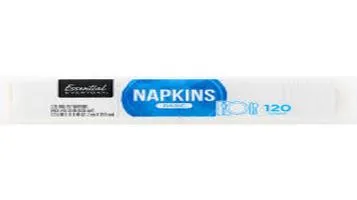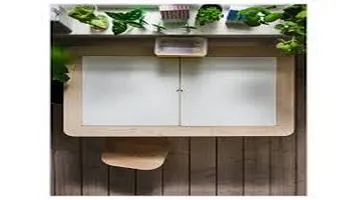The Humble Napkin: A Review of an Everyday Essential
Napkins are essential dining accessories used for maintaining cleanliness and etiquette during meals. Typically made from cloth or paper, they serve multiple purposes, including protecting clothing, wiping hands and mouths, and enhancing table settings. Cloth napkins, often made from materials like cotton or linen, are reusable and add an elegant touch to formal dining occasions. In contrast, paper napkins offer convenience and are ideal for casual settings and large gatherings due to their disposability. Available in various sizes, colors, and patterns, napkins can also serve as decorative elements that complement the theme or ambiance of an event. Beyond their functional role, napkins reflect cultural dining practices and contribute to a pleasant dining experience by ensuring comfort and cleanliness for guests.

When we think about essential items in our daily lives, it's easy to overlook the unassuming napkin. Whether at a cozy family dinner, a bustling restaurant, or a casual picnic, napkins are a ubiquitous presence that we often take for granted. Yet, these small pieces of cloth or paper play a crucial role in maintaining cleanliness and adding a touch of elegance to our dining experiences. In this review, I'll explore the different types of napkins, their functionalities, and why they deserve more appreciation.
Types of Napkins
Napkins come in various forms, each suited to different occasions and needs. The two primary categories are cloth napkins and paper napkins.
1. Cloth Napkins:
Cloth napkins are the epitome of elegance and sophistication. Made from materials such as cotton, linen, or polyester blends, cloth napkins are reusable and durable. They are available in a plethora of colors, patterns, and sizes, making them perfect for formal dining settings, weddings, and other special occasions.
2. Paper Napkins:
Paper napkins, on the other hand, are the go-to choice for casual dining and large gatherings. They are disposable, which makes them incredibly convenient, especially for events where quick clean-up is essential. Paper napkins also come in various designs and qualities, from the basic white ones found in fast-food restaurants to intricately printed ones used at themed parties.
Functionality and Convenience
The primary function of a napkin is to keep us clean while eating. They protect our clothes from spills and stains, wipe away crumbs and grease, and can even be used to dab at the corners of our mouths. But beyond their basic utility, napkins also serve other important roles.
1. Hygiene:
Napkins contribute significantly to hygiene. In restaurants, a napkin on the table signals that the setting is clean and ready for the next guest. During meals, they help us maintain personal cleanliness, which is especially important when handling foods like ribs, burgers, or any other finger foods.
2. Aesthetic Appeal:
A beautifully folded cloth napkin can elevate the dining experience. Restaurants and hosts often use napkin folding techniques to add a touch of artistry to the table setting, enhancing the overall ambiance. Even paper napkins, with their myriad designs and colors, can complement the theme of an event, making the dining experience more enjoyable.
3. Versatility:
Napkins are incredibly versatile. Beyond their primary use, they can serve as makeshift coasters, placemats, or even wrappers for utensils. In emergencies, a napkin can be used to clean up small spills or as a temporary bandage for minor cuts.
Environmental Considerations
While napkins are undeniably useful, their environmental impact cannot be ignored. The production and disposal of paper napkins contribute to deforestation and increased landfill waste. However, many companies are now producing eco-friendly options made from recycled materials or sustainable sources. Compostable napkins are also becoming popular, offering a more environmentally responsible choice for disposable napkins.
Cloth napkins, although more environmentally friendly in the long run, require water and energy for washing. Nevertheless, their reusability makes them a more sustainable option for regular use. By choosing high-quality cloth napkins and washing them with eco-friendly detergents, we can minimize their environmental footprint.
Personal Experience
In my own experience, I've found that the type of napkin I prefer depends largely on the occasion. For everyday use at home, I lean towards cloth napkins. They are soft, durable, and add a touch of elegance to even the simplest meal. I’ve invested in a set of high-quality cotton napkins that have lasted for years, and they only get softer with each wash.
For larger gatherings or outdoor events, I opt for paper napkins. The convenience of disposable napkins is unmatched in these scenarios. However, I make a conscious effort to choose biodegradable or recycled paper options to reduce environmental impact.
One memorable experience was a family wedding where the hosts used beautifully embroidered linen napkins. Not only did they add a touch of sophistication to the table settings, but they also served as keepsakes for the guests. This thoughtful detail left a lasting impression and highlighted how something as simple as a napkin can enhance an event.
Conclusion
Napkins may be a small part of our daily lives, but their impact is significant. They offer practicality, enhance aesthetic appeal, and contribute to hygiene. As we become more conscious of our environmental footprint, choosing the right type of napkin for each occasion becomes essential. Whether you prefer the elegance of cloth napkins or the convenience of paper ones, there's no denying that napkins are an indispensable part of our dining experiences. So next time you sit down for a meal, take a moment to appreciate the humble napkin—it's more important than you might think.






